There are really only two reasons to ever use a struct, and that is either to get value type semantics, or for better performance.
As the struct contains an array, value type semantics doesn't work well. When you copy the struct you get a copy of the count, but you only get a copy of the reference to the array, not a copy of the items in the array. Therefore you would have to use special care whenever the struct is copied so that you don't get inconsistent instances of it.
So, the only remaining valid reason would be performance. There is a small overhead for each reference type instance, so if you have a lot of them there may be a noticable performance gain.
One nifty feature of such a structure is that you can create an array of them, and you get an array of empty lists without having to initialise each list:
ItemList<string>[] = new ItemList<string>[42];
As the items in the array are zero-filled, the count member will be zero and the items member will be null.
